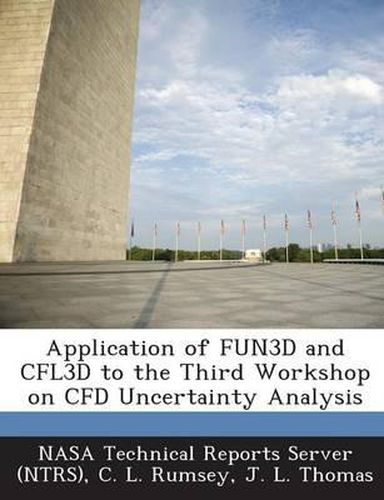Readings Newsletter
Become a Readings Member to make your shopping experience even easier.
Sign in or sign up for free!
You’re not far away from qualifying for FREE standard shipping within Australia
You’ve qualified for FREE standard shipping within Australia
The cart is loading…






Two Reynolds-averaged Navier-Stokes computer codes - one unstructured and one structured - are applied to two workshop cases (for the 3rd Workshop on CFD Uncertainty Analysis, held at Instituto Superior Tecnico, Lisbon, in October 2008) for the purpose of uncertainty analysis. The Spalart-Allmaras turbulence model is employed. The first case uses the method of manufactured solution and is intended as a verification case. In other words, the CFD solution is expected to approach the exact solution as the grid is refined. The second case is a validation case (comparison against experiment), for which modeling errors inherent in the turbulence model and errors/uncertainty in the experiment may prevent close agreement. The results from the two computer codes are also compared. This exercise verifies that the codes are consistent both with the exact manufactured solution and with each other. In terms of order property, both codes behave as expected for the manufactured solution. For the backward facing step, CFD uncertainty on the finest grid is computed and is generally very low for both codes (whose results are nearly identical). Agreement with experiment is good at some locations for particular variables, but there are also many areas where the CFD and experimental uncertainties do not overlap.
$9.00 standard shipping within Australia
FREE standard shipping within Australia for orders over $100.00
Express & International shipping calculated at checkout
Two Reynolds-averaged Navier-Stokes computer codes - one unstructured and one structured - are applied to two workshop cases (for the 3rd Workshop on CFD Uncertainty Analysis, held at Instituto Superior Tecnico, Lisbon, in October 2008) for the purpose of uncertainty analysis. The Spalart-Allmaras turbulence model is employed. The first case uses the method of manufactured solution and is intended as a verification case. In other words, the CFD solution is expected to approach the exact solution as the grid is refined. The second case is a validation case (comparison against experiment), for which modeling errors inherent in the turbulence model and errors/uncertainty in the experiment may prevent close agreement. The results from the two computer codes are also compared. This exercise verifies that the codes are consistent both with the exact manufactured solution and with each other. In terms of order property, both codes behave as expected for the manufactured solution. For the backward facing step, CFD uncertainty on the finest grid is computed and is generally very low for both codes (whose results are nearly identical). Agreement with experiment is good at some locations for particular variables, but there are also many areas where the CFD and experimental uncertainties do not overlap.